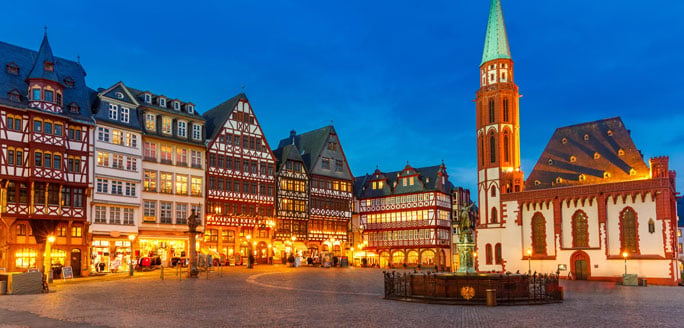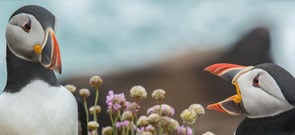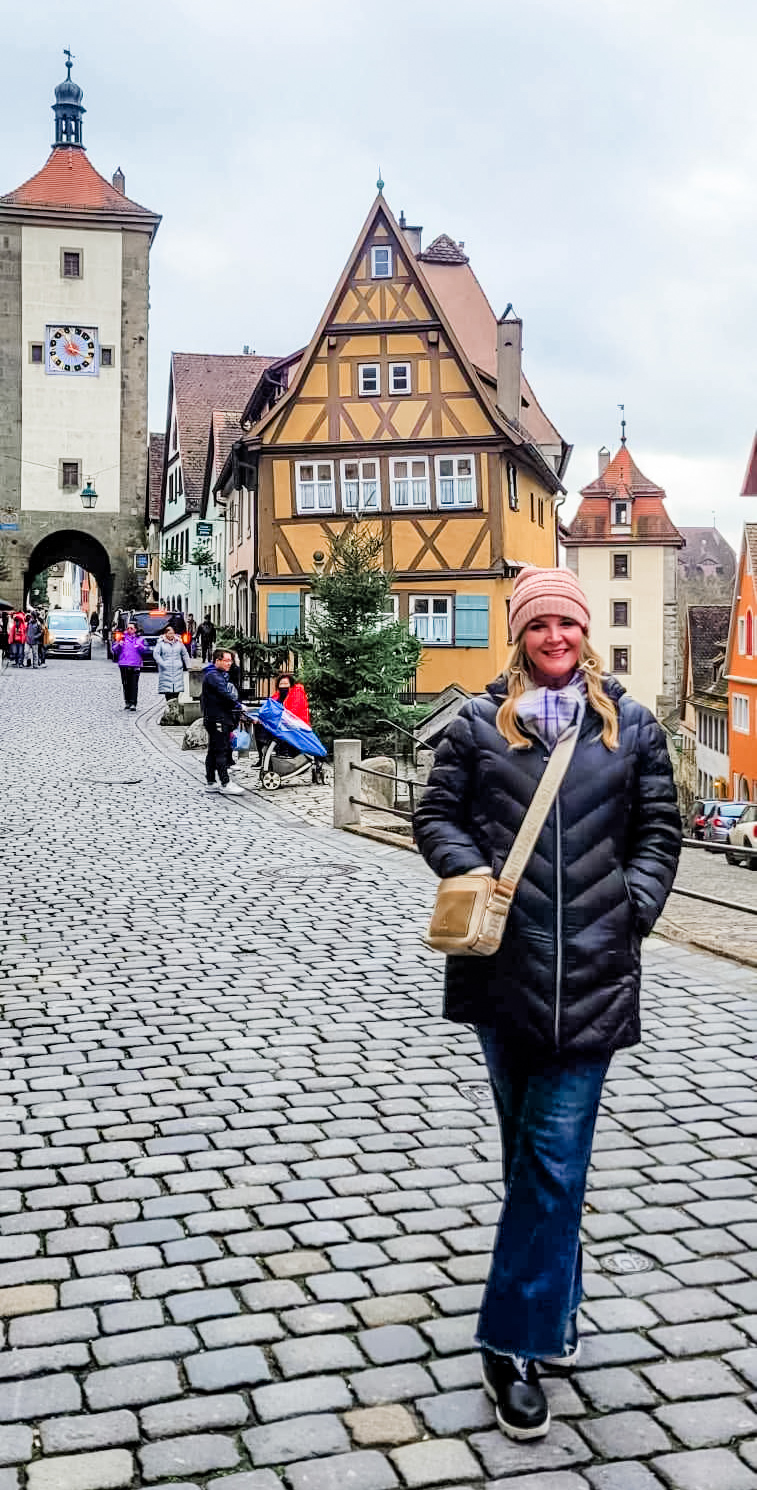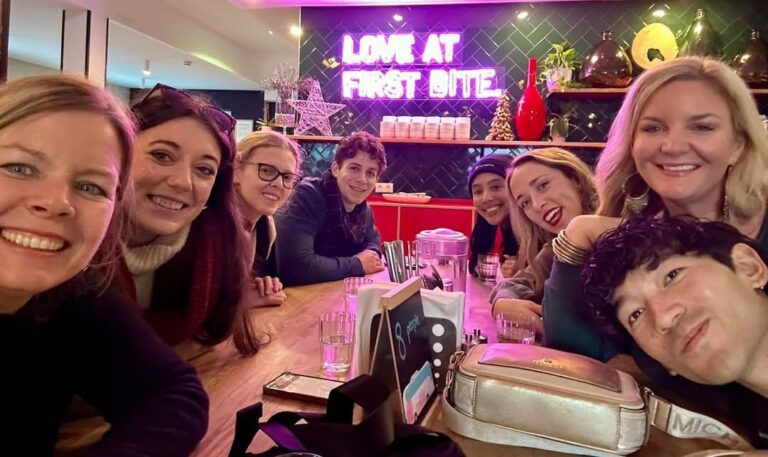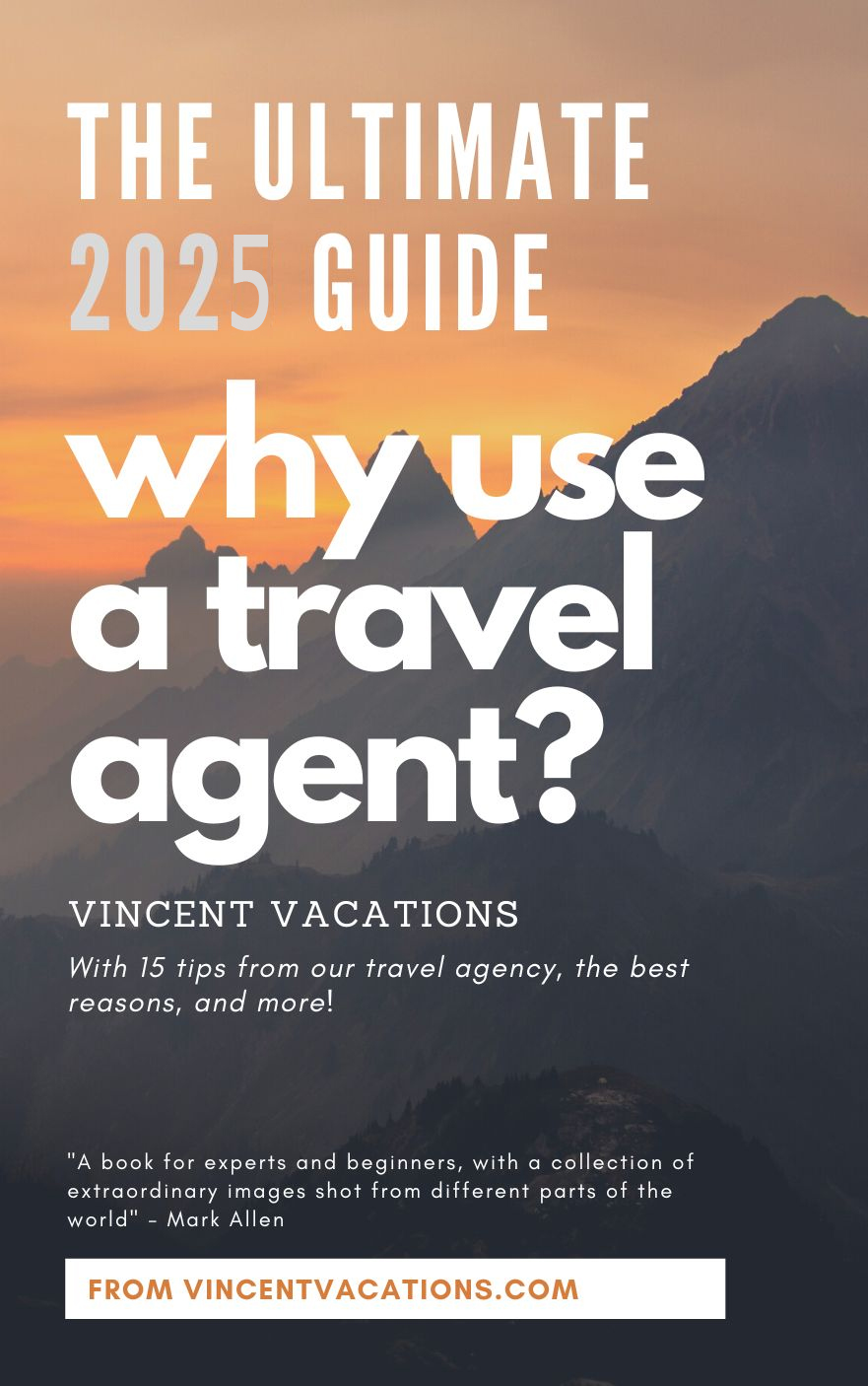We recognize that Disney vacations are not just an investment, but often the highlights of our lives, and we take that responsibility seriously. We want to ensure you have the best vacation experience.
Interested in a job in travel? Click here to learn: How to Become a Disney Travel Agent
Overview
Introduction

Frankfurt am Main, Germany, may be the smallest of Europe's big cities, but it's certainly not lacking in stature.
Throughout its history, Frankfurt has been linked to international trade, commerce and transportation. Today, Frankfurt is the home of the European Central Bank and the largest German stock exchange. A popular European travel destination, it is also a major transportation hub, with one of Europe's largest airports and one of its busiest train stations.
Only a small section of Frankfurt's original town center survived the bombings of World War II, and much of the city was rebuilt in the 1950s. Today, its multifaceted outlook reflects its colorful history of fame, destruction and rebirth.
Frankfurt's importance as a travel and tourism destination is sometimes countered by its dubious reputation as a dull, business-minded place. It's true that every day this city swells with 325,000 commuters who go to work in the gleaming financial district or attend one of its world-famous trade fairs.
However, locals and visitors alike appreciate Frankfurt's fine opera, ballet and world-class museums. Those who do take the time to get to know the city are also pleasantly surprised by its multicultural variety and the beauty of its suburbs and surrounding countryside. For a look at Frankfurt's fun tourism side, visit the baboons at the Frankfurt Zoo or sample the local apple wine.
Must See or Do
Sights—Goethehaus and Museum; the Kaiserdom and its original Gothic carvings; Paulskirche; Alte Oper, the old opera house; the view of the city's skyline from atop the Main Tower.
Museums—German, Flemish and Italian old masters' paintings and new artworks at the Stadelsches Kunstinstitut und Stadtische Galerie; contemporary (and constantly changing) exhibits at the Museum fur Moderne Kunst and the Schirn Kunsthalle.
Memorable Meals—Upscale meals at the Restaurant Francais in the Steigenberger Frankfurter Hof; brunch or dinner surrounded by the golden splendor at Restaurant Opera; German classics and local specialties at Frankfurter Haus; garden dining at Zum Rad; a preshow meal at Tiger-Restaurant.
Late Night—Jazz at the Jazzkeller; exploring the German techno scene at Robert Johnson; music and comedy at Batschkapp.
Walks—A peaceful jaunt amid exotic plants in the Palmengarten; an evening stroll along the Museumsufer to see the skyline lit up; walking along the banks of the Main enjoying views of boats, bridges and Frankfurt's architecturally distinguished museum row.
Especially for Kids—The Frankfurt Zoo; swimming at the Titus Thermen; the Junges Museum; the Museum fur Kommunikation; a boat ride on the Main River.
Geography
Frankfurt sprawls out from the Main (pronounced mine) River, although most locations of interest are relatively close together. The historic center of the city is Romerberg, a square just two blocks north of the Main. The old town's walls were torn down and the moats filled in, but a greenbelt of parks loops around the old city in their place. Several old guardhouse towers still stand as landmarks.
Northeast of Romerberg is the Konstablerwache, which has U-Bahn and S-Bahn stations. Northwest of Romerberg is the Hauptwache, now a cafe and also an important transportation hub. To the east of the Hauptwache is the Zeil, Frankfurt's busiest shopping street, and to the west is Grosse Bockenheimer Strasse, known locally as the Fressgasse (or "chow-down alley") for its food markets, delis and eating establishments.
To the south of the Romerberg is an old iron footbridge, the Eiserner Steg, which crosses the Main into Sachsenhausen. In Sachsenhausen, you'll find interesting pubs and traditional taverns, as well as the Museumsufer (museums along the southern embankment).
On the northern side of the river—west of Romerberg—is the Hauptbahnhof (main train station). Just a few blocks northwest of the station is the Festhalle, the main gateway to the giant fairground known as Messe Frankfurt.
History
Frankfurt's origins date back to the late eighth century, but there were Celtic and Roman settlements in the area long before then. The city got a big break when Charles I (Charlemagne), the king of the Franks, chose it as one of his official residences. But feuds between the Franks and the Saxons across the river didn't give him much peace.
Frankfurt's next political endorsement came in 1152, when Frederick I (Barbarossa) was elected Holy Roman Emperor there. Subsequently, the city became the electoral, and eventually the coronation, capital of the Holy Roman Empire, a political entity that included much of western Europe from 800 to 1806. In the early Middle Ages, Frankfurt also developed into a commercial center by hosting international trade fairs.
Wars during the 17th-20th centuries meant repeated invasions and occupations for the city. During the Nazi period, Frankfurt's Jewish population—the second largest in Germany and originally the heart of the city's banking tradition—was devastated as a result of deportation, murder and exile. Following World War II, Frankfurt itself lay in ruins.
Slowly things began to look up in the postwar period as the West German Bundesbank (central bank) made its headquarters in the city, along with many other financial institutions. The city's monetary and financial traditions, as well as its transportation infrastructure, were instrumental in its being named the seat of the European Central Bank. The euro was officially launched there in 1999.
Frankfurt continues to thrive as a financial center—a fact most apparent in its ever-expanding skyline.
Potpourri
Apfelwein (apple wine), called ebbelwoi or stoffsche in the local dialect, is Frankfurt's universal drink. Best consumed on long wooden benches shared with strangers, it is a philosophy of life, not just a drink. The biggest bembel (apple wine jug) can hold up to 12 liters. Few people know that apple wine is also produced in a tasty sparkling variety. Unlike neuer wein (new wine) that is available only in the fall, apfelwein is available all year long.
Every year people complain about hotel owners jacking up their prices during the Frankfurt Book Fair. Event organizers threaten to move the fair to Munich, but the huge international fair with 7,500 presenters from 110 countries remains in Frankfurt.
Famous native Frankfurters include Otto Hahn, who in 1938 discovered nuclear fission of uranium—by accident—and Anne Frank. Her family fled to Amsterdam in 1933, when she was 4 years old, and there she later wrote the diary that would become world-famous. She never saw her native city again and was deported to the Bergen-Belsen concentration camp, where she died in 1945.
Cedar, fig, laurel and lemon trees grow on the northern bank of the Main River between Friedensbrucke and Untermainbrucke, and so the locals call this area Nizza, after the balmy city of Nice, on the French Riviera.
Frankfurt is home to Germany's most important sports organizations. The German Sports Federation (DSB), the National Olympic Committee (NOK) and the German Football Association (DFB) are all based there.
In a tradition going back to 1347, the bells of all Frankfurt churches ring out the beautiful melody of the Frankfurter Stadtgelaut—but only four times a year, on the evenings before Easter, Pentecost, Christmas and the first Sunday in Advent.
There are two cities in Germany named Frankfurt. One is Frankfurt am Main (Frankfurt on the Main River) in the west half of Germany, and the other is Frankfurt an der Oder (Frankfurt on the Oder River) and is located on the east, closer to Berlin. When using a GPS, it is important to be sure you are heading to the correct destination. The two cities are usually differentiated by stating the river on which they lie (i.e. am Main).
Some of the largest American military bases outside of the United States are located close to Frankfurt. It is not uncommon to see Americans or to hear American-English spoken.
Location
Frankfurt's main port, Osthafen (East Port) is primarily a commercial port for transport of containerized cargo. There are scenic boat cruises that depart from the Mainkai dock (near the Eisener Steg bridge) in the vicinity of the Altstadt (Old Town) and the Westhafen (West Port). In addition to these 60-90-minute scenic cruises past small towns west of Frankfurt, there are longer, weeklong cruises between Nuremberg and Frankfurt, with the option of embarking or disembarking in Frankfurt.
Shore Excursions
Typical shore excursions when arriving on a Main and Rhine River Cruise include tours of Frankfurt's historic center, the Altstadt, half-day tours of the Rhine Valley with wine tasting or day trips to Heidelberg to visit one of Germany's most beautiful castles, Schloss Heidelberg. Another option is a half-day excursion to the nearby towns of Wiesbaden, for the classical architecture of the Kurhaus, and Rudesheim, for its charming medieval streets.














